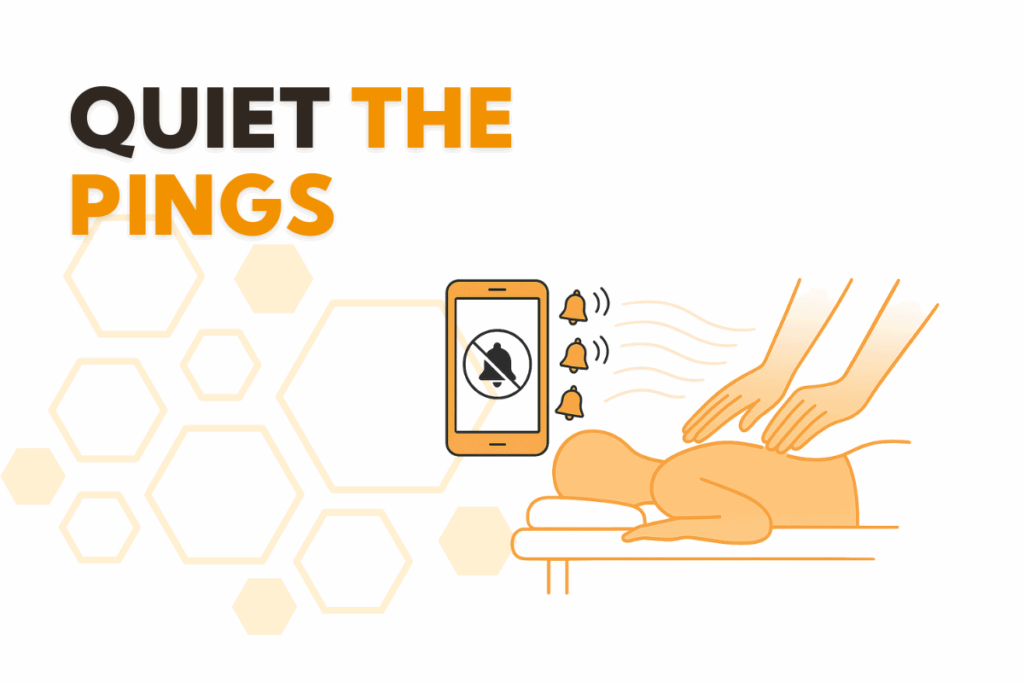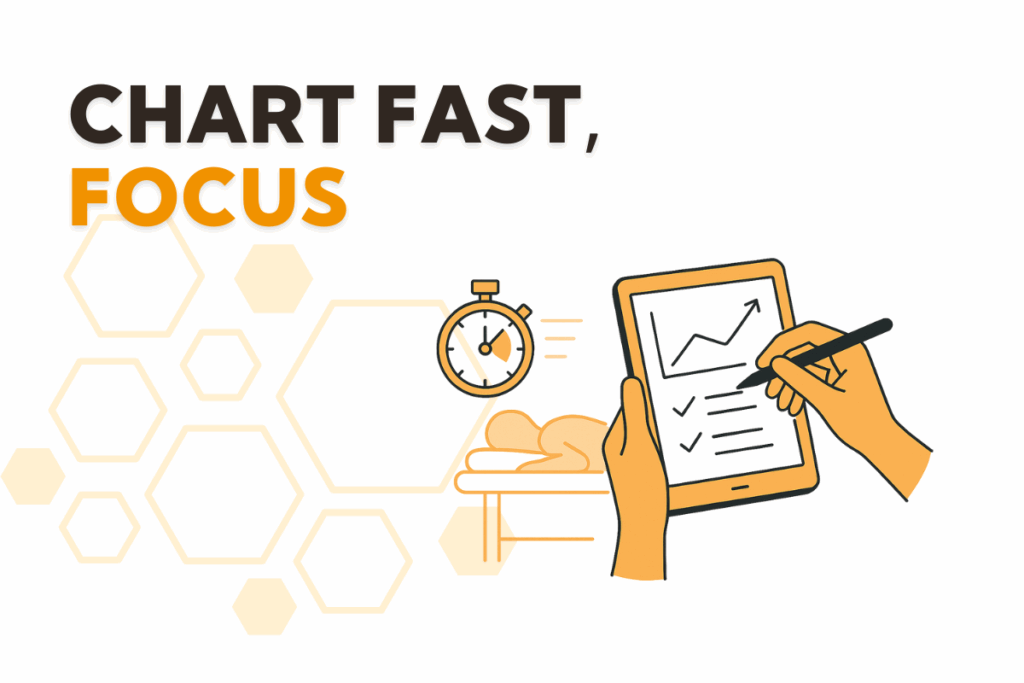Subheading: Managing tech is taking time away from client care, and the day’s quiet focus is slipping into logins, notifications, and scattered information. This guide shows how clinics reduce friction, finish notes on time, and keep attention where it matters most.
The unseen drain on your day is constant switching, not commitment
Managing tech is taking time away from client care when a therapist finishes a session, opens notes, then gets pulled into a reschedule request and a billing question before the record is complete. Each hop forces a mental reset. The calendar looks full of clients, yet the body feels like it worked two jobs. The problem is rarely a single tool. It is the cumulative load of tiny tasks that never let your clinical mind land.
What actually steals minutes inside a massage clinic
How scattered details create fatigue you can feel
Managing tech is taking time away from client care when post op notes, pain severity, or accessibility needs live in different places. You spend energy hunting instead of helping, and the client senses the drift. Ten lost minutes between sessions becomes an hour by day’s end, which turns into after hours charting and a slow slide toward burnout.
Why presence drops even when you work harder
Managing tech is taking time away from client care because switching tasks breaks the rhythm that supports clear assessment and confident touch. When the brain toggles between clinical reasoning and inbox triage, both slow down. Clients want steady attention, not heroic multitasking.
Cut documentation time without cutting clinical quality
Turn common cases into short, prompt based notes
Identify the presentations you chart most. Create concise prompts that cover today’s goal, objective findings, changes since last visit, and plan. Managing tech is taking time away from client care when free typing replaces structure. Short prompts keep your voice and speed up completion.
Protect on calendar charting blocks as part of care
Add a three to five minute buffer after each session and honor it. Notes written while the session is fresh finish faster and reduce rework later. Managing tech is taking time away from client care if charting is always squeezed between messages.
Share the load with clear roles and one record
Front desk collects demographics and coverage. Therapists confirm red flags chairside. Keep critical flags in a single shared record so they surface before treatment begins. For streamlined documentation, use clinic electronic charting notes to keep charting fast and consistent.

Notification hygiene that protects the room
Replace constant checking with predictable message windows
Set one morning window and one late afternoon window for email and messages. Use an auto reply during treatment hours that explains response times. Clients feel cared for when expectations are clear, and therapists regain a steady rhythm.
Define urgency so requests route the same way every time
Mark same day injury changes, accessibility needs, and last minute cancellations as urgent. Route them to one monitored channel. Everything else waits for the next window. Managing tech is taking time away from client care when every ping gets equal priority.
Prepare the room first, then the record
Take three quiet minutes before each session to review the last objective note, confirm today’s aim, and scan flags. Enter the room ready. Documentation becomes faster and cleaner afterward because the plan is already in mind.
One client, one story, one source of truth
Decide where core data lives and point every workflow there
Health history, clinical flags, SOAP notes, and plan of care should live in one trusted record. Managing tech is taking time away from client care when the same fact is stored in three places. Pick a system of record and make all paths lead back to it.
Retire duplicates and close loops that waste time
Audit old spreadsheets, side forms, and unneeded apps. If the information already lives in your main record, remove the duplicate and replace it with a link. Less duplication means fewer errors and less hunting during a busy day. Reduce repetitive tasks with massage clinic business automation to keep admin work predictable.
Team rhythm beats individual heroics
Start the day with a focused ten minute huddle
Review schedule changes, special considerations, and key supplies. A shared plan prevents mid day scrambling and protects charting buffers for every therapist.
End the day with an all clear
Confirm notes are complete, payouts reconciled, and callbacks scheduled. Tomorrow starts lighter when today’s loops are closed.
Early burnout signals you should not ignore
Read the clinic’s dashboard of human signs
Look for steady after hours charting, growing message backlogs, tense handoffs, and frequent payout corrections. Managing tech is taking time away from client care when these patterns appear across the team. Adjust capacity, refine templates, and reset notification rules before the strain sets in.

Quick wins you can use this week
Build a 3 by 5 note kit
Create five short templates for your three most frequent conditions. Keep them easy to adapt so therapists actually use them.
Ask smarter questions at booking
Invite clients to share pain severity, recent procedures, and access needs during scheduling. Better inputs at the front door make sessions faster and safer.
Establish silent hours that keep the room calm
During treatment blocks, silence non urgent apps, and route true urgencies to one place. Post the policy at reception and include it in confirmations so expectations are shared.
Make clinic know how easy to find
Create a mobile friendly handbook for the team
Write short, scannable pages for rescheduling steps, direct billing, refunds, tip policy, and urgent issues. Use clear headings and human language. Review quarterly, retire outdated steps, and re share the link so everyone follows the same playbook.
Measure minutes, not myths
Run a two week time study and act on what you learn
Track documentation minutes per session, response time to non urgent messages, and the number of app switches per role. Choose three metrics, review them monthly, and adjust templates, huddles, and message windows based on results. Managing tech is taking time away from client care until you can see where the minutes go and reclaim them with intent.
Keep the heartbeat in the room
Clients return for skill and presence. When you reduce digital friction, protect charting time, and align the team around simple rhythms, you protect both. Managing tech is taking time away from client care, but with steady steps and clear guardrails, your day can feel human again.
FAQs
Use short prompts for your most common cases, protect a small charting buffer after each session, and keep red flags in one shared record. Managing tech is taking time away from client care when free typing replaces structure.
Define urgency, set two message windows, use an auto reply for expectations, and route true urgencies to one monitored channel. This keeps care steady without missing what matters.
Choose a single system of record for identity, health history, and clinical flags. Retire side spreadsheets and link every workflow back to the primary record to prevent drift.
Watch for routine after hours charting, message backlogs, strained handoffs, and frequent payout corrections. Address workflow and capacity before assuming individual performance is the issue.


